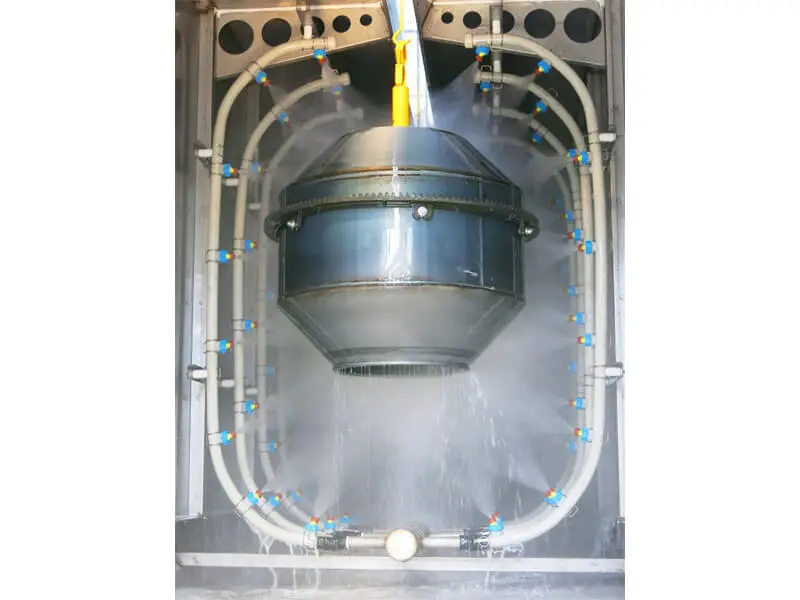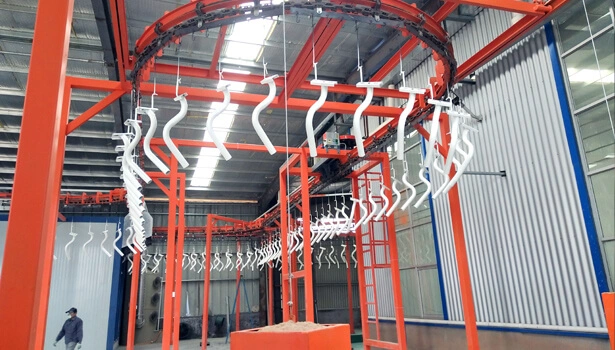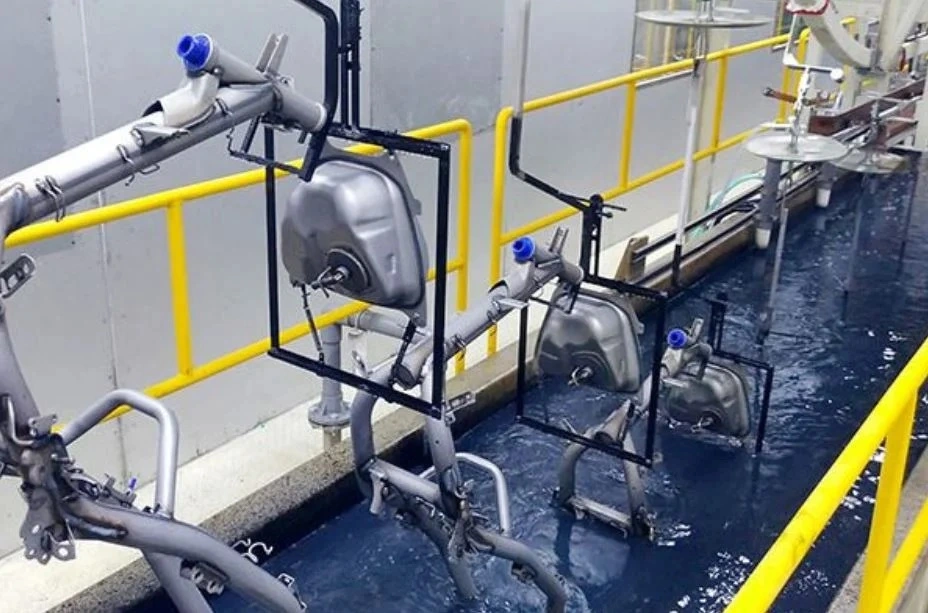I still remember the frustration in the voice of the workshop supervisor I spoke with last spring. He'd invested in a high-end powder coating system, but the curing process was creating bottlenecks that threatened to undo all his efficiency gains. "We're painting parts faster than we can cure them," he told me, "and now our beautiful new coating line is backing up like Friday traffic." This conversation highlighted a critical truth I've seen repeatedly over the years: even with the best application equipment, your powder coating system is only as strong as its curing capability. For countless operations, the solution lies in selecting the right powder coating batch oven—a workhorse that often doesn't get the strategic consideration it deserves. Having worked with manufacturers like HANNA to solve these precise challenges, I've come to understand that choosing between batch and continuous curing, and then selecting the ideal powder coating batch oven, represents one of the most impactful decisions for coating operations of all sizes.

Understanding the Powder Coating Batch Oven: Core Function and Operation
At its essence, a powder coating batch oven is an enclosed, thermally insulated chamber that uses controlled heat to cure applied powder coatings into a durable, finished surface. Unlike continuous ovens that process parts on a moving conveyor, a powder coating batch oven treats loads in discrete batches—making it ideal for lower-volume production, large or irregularly shaped items, and operations with frequent color or product changes. The curing process involves precisely raising the part temperature to the powder manufacturer's specified level (typically 300-450°F / 149-232°C) and maintaining it for a set time (usually 10-30 minutes). This thermal cross-linking transforms the powder from a decorative coating into a resilient, chemically resistant finish. What many don't realize is that not all powder coating batch ovens operate identically. The heating methodology—whether convection, infrared, or a combination—significantly impacts cure quality, energy consumption, and throughput time.
Key Applications Where a Powder Coating Batch Oven Excels
The versatility of the powder coating batch oven makes it suitable for diverse industrial applications. Metal fabrication shops particularly benefit from this equipment when handling oversized structural components, machine frames, or architectural elements that wouldn't fit easily on a conveyorized line. The job shop environment, with its constantly changing mix of parts, materials, and coating specifications, represents another ideal use case where the flexibility of a powder coating batch oven proves invaluable. For prototyping, research and development activities, and low-volume manufacturing, the ability to process small batches economically makes this equipment essential. I've seen operations specializing in agricultural equipment, custom furniture, and industrial machinery achieve remarkable quality consistency using well-engineered powder coating batch ovens from manufacturers like HANNA. The common thread across these applications is the need for curing flexibility without sacrificing finish quality.
Critical Design Considerations for Powder Coating Batch Ovens
Selecting an appropriate powder coating batch oven requires careful evaluation of several design parameters. The internal workspace dimensions must accommodate your largest anticipated parts while leaving sufficient clearance for proper air circulation—generally 6-12 inches around all sides. Heating system design dramatically affects performance; convection systems using recirculated hot air provide excellent temperature uniformity for complex geometries, while infrared systems can offer faster heat-up times for simpler shapes. Insulation quality, measured both in material R-value and installation integrity, directly impacts energy efficiency and exterior surface temperatures. Control system sophistication ranges from simple manual timers and thermostats to programmable logic controllers with data logging capabilities. When evaluating a powder coating batch oven from manufacturers like HANNA, pay particular attention to airflow design—properly engineered plenums and baffles ensure consistent temperatures throughout the load, preventing under-cured areas that compromise coating performance.

The Business Case: Analyzing Costs of Powder Coating Batch Ovens
Understanding the financial implications of a powder coating batch oven purchase requires looking beyond the initial equipment price. While entry-level batch ovens might start around $15,000, sophisticated systems with advanced controls and emissions treatment can exceed $100,000. However, the true cost assessment must include operational expenses—particularly energy consumption, which typically represents 70-80% of the total cost of ownership over a powder coating batch oven's 15-20 year lifespan. Natural gas-powered models generally offer lower operating costs compared to electric units, though utility rates and availability vary by location. Maintenance requirements form another cost component; simpler designs with standard components often have lower long-term service expenses. I always advise clients to request detailed efficiency data from manufacturers—HANNA, for instance, provides projected annual operating costs based on your specific production volumes and local energy rates. This comprehensive financial perspective reveals how investing in a well-engineered powder coating batch oven can deliver superior value despite a higher initial price.
Batch Oven vs. Continuous Oven: Making the Right Choice
The decision between a powder coating batch oven and a continuous oven fundamentally shapes your operation's workflow and capabilities. A powder coating batch oven offers distinct advantages for operations with variable production volumes, diverse part sizes, or frequent coating formula changes. The flexibility to process different products without line changeovers makes it ideal for job shops and manufacturers with highly customized outputs. Conversely, continuous ovens better serve high-volume operations with standardized products where maximizing throughput justifies the larger footprint and higher capital investment. I recently consulted with a manufacturer who struggled with a continuous system until they switched to a large custom powder coating batch oven—their energy consumption dropped 40% because they weren't maintaining curing temperatures during production gaps. For operations with space constraints, the vertical powder coating batch oven design can provide substantial capacity in a minimal footprint—another advantage rarely available with continuous systems.
Technological Advancements in Modern Powder Coating Batch Ovens
The powder coating batch oven has evolved significantly from simple insulated boxes with heating elements. Today's advanced systems incorporate sophisticated control systems that automatically adjust curing parameters based on part mass and starting temperature. Energy efficiency has become a primary focus, with innovations like heat recovery systems, improved insulation materials, and burner technology that extracts maximum BTUs from fuel sources. The integration of IoT capabilities represents another leap forward—modern powder coating batch ovens can now provide real-time performance data, predictive maintenance alerts, and remote troubleshooting access. Manufacturers like HANNA have developed proprietary airflow technologies that ensure temperature uniformity remains within ±5°F (±2.8°C) throughout the chamber—critical for achieving consistent cure with today's low-temperature powders. These advancements collectively deliver powder coating batch ovens that cure faster, consume less energy, and produce more reliable results than their predecessors.
Custom Powder Coating Batch Ovens: Solving Unique Production Challenges
While standard powder coating batch ovens serve many applications effectively, custom engineering solutions often provide transformative benefits. I've observed operations achieve remarkable improvements through properly specified custom powder coating batch ovens designed around their specific workflow. Unusual part geometries—such as tubular structures, assemblies with internal cavities, or items with significant variations in mass—often benefit from tailored airflow patterns and specialized racking configurations. Operations with strict emissions regulations might require integrated afterburner or filtration systems. Manufacturers like HANNA regularly engineer powder coating batch ovens with unique material handling integrations, specialized safety systems for coating flammable substrates, and unique chamber configurations that maximize facility space utilization. The most successful custom powder coating batch oven projects begin with thorough application analysis—documenting not just today's requirements but anticipated future needs that ensure the equipment remains valuable as business evolves.
Why HANNA Stands Out in Powder Coating Batch Oven Manufacturing
In a market filled with equipment suppliers, HANNA has distinguished itself through engineering excellence and customer-focused solutions. Their powder coating batch ovens incorporate decades of thermal processing experience into designs that balance performance, efficiency, and durability. What specifically sets HANNA apart? Their commitment to validation testing—every powder coating batch oven design undergoes rigorous temperature mapping before delivery, ensuring documented performance rather than promised specifications. Their control systems feature intuitive interfaces that operators can master quickly, reducing training time and operational errors. Most importantly, HANNA approaches each powder coating batch oven project as a partnership, working closely with clients to understand their unique challenges rather than simply selling standard solutions. This collaborative methodology consistently delivers powder coating batch ovens that outperform expectations and provide lasting value.
Optimizing Your Powder Coating Batch Oven Operation
Maximizing the return on your powder coating batch oven investment requires attention to operational details. Proper loading techniques significantly impact cure quality and energy efficiency—maintaining adequate space between parts and ensuring airflow pathways remain unobstructed prevents temperature variations. Establishing preventive maintenance routines extends equipment life and prevents unexpected downtime; simple tasks like filter cleaning, door seal inspection, and calibration verification take minutes but save days of production losses. For operations using multiple powder formulations, developing detailed cure schedules for each product prevents both under-curing and excessive energy consumption from over-curing. The most successful operations I've visited treat their powder coating batch oven as a precision instrument rather than simple equipment—they track performance metrics, document optimal practices, and continuously train operators. This disciplined approach transforms the powder coating batch oven from a cost center into a competitive advantage.
Frequently Asked Questions (FAQs)
Q1: What is the typical heating time for a powder coating batch oven to reach operating temperature?
A1: Heat-up time varies significantly based on oven size, insulation quality, and heating capacity. A well-designed powder coating batch oven typically reaches curing temperatures (350-400°F) within 20-45 minutes from a cold start. Manufacturers like HANNA provide specific heat-up curves for their equipment based on your facility's gas pressure or electrical service.
Q2: Can a powder coating batch oven accommodate different types of powders with varying cure requirements?
A2: Yes, this represents one of the key advantages of a powder coating batch oven. Programmable controllers allow storage of multiple cure recipes for different powders and part configurations. The flexibility to adjust both temperature and time parameters makes a powder coating batch oven ideal for operations using various coating formulations.
Q3: What safety features should I look for in a powder coating batch oven?
A3: Essential safety features include overtemperature protection, properly interlocked access doors, ventilation for powder volatiles, emergency stop buttons, and combustion safeguards for gas-fired models. Reputable manufacturers like HANNA design their powder coating batch ovens to comply with relevant safety standards including NFPA 86 and OSHA requirements.
Q4: How energy-efficient are modern powder coating batch ovens compared to older models?
A4: Significant advancements in insulation materials, burner technology, and heat recovery systems have improved efficiency by 30-50% over models from two decades ago. Modern powder coating batch ovens from quality manufacturers feature enhanced sealing, better airflow designs, and sophisticated controls that minimize energy waste throughout the curing cycle.
Q5: What maintenance does a powder coating batch oven require to ensure optimal performance?
A5: Regular maintenance includes cleaning air filters, verifying temperature calibration, inspecting door seals, checking burner operation (on gas models), and ensuring safety systems function properly. Establishing a preventive maintenance schedule specific to your powder coating batch oven model—using manufacturer recommendations as a baseline—maximizes equipment lifespan and consistent performance.
This article draws on decades of industrial coating experience and technical consultation with equipment manufacturers. For specific guidance regarding your powder coating batch oven requirements, consult directly with engineering specialists at established manufacturers like HANNA to evaluate your unique operational needs.











